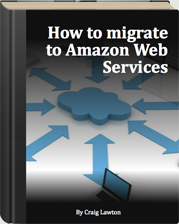It’s been a few weeks since my last update, with a holiday in Fiji, a sick child and a house renovation. Today’s issue is “Cost Management” (which I can relate to with those renovations!)
Most IT departments have at one stage considered implementing a charge-back model for their services. Some mad people have actually implemented one. The idea is that an IT department charges back costs to business units who then become magically accountable for their spending.
But tell business folks you’re going to bill them and they push back. Business managers don’t like bills, especially for things that used to be free. Charge-back can also be complicated and expensive to implement.
Enter the Cloud! AWS and other cloud services let business units spin up their own instances, possibly on someone’s credit card. They have to pay. Charge-back is built into the cloud.
The poorly executed project than needed a mountain of infrastructure to run, will appear against that project and business unit in a nice dollar amount.
When there is a live problem with performance, people under pressure will “throw hardware at the problem” and spin up more EC2 instances. The bill will arrive and it will be a “surprise”.
If no management process is put in place, business units will spin up cloud instances and never shut them down.
And if they decide to shift these costs out of their business unit and into IT where the costs have usually resided, IT will measure and record the costs.
Spending accountability processes that have been built up over time will also need adjustment to deal with this nimble nature of cloud spending.
IT and business units will have to go through the exercise of turning off IT components not in use. This can take the form of shutting down servers at night, or turning off DR services when not in an actual disaster or test.
How do you compare this resultant AWS cost against internally hosted services? How do you keep track of it when both internal IT and cloud costs continually drop each year?
In some ways today’s “problem” will become tomorrow’s benefit as the cloud forces more cost transparency and accountability on the business. In the mean time it’s going to be a headache.
I’m really keen to understand, and for people to share, how they measure AWS (or similar) costs against an internally hosted platform. When you’re at the business case development stage how to do you model the costs for both options and make a decision? Please share.




2 Comments